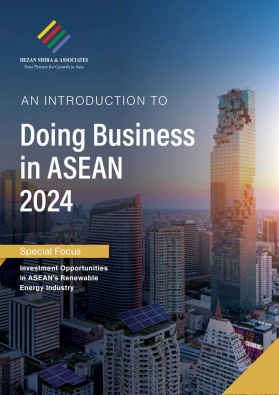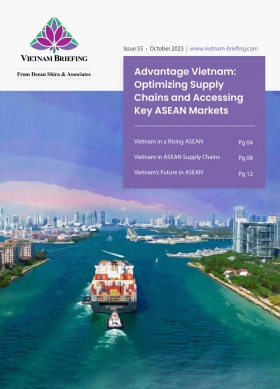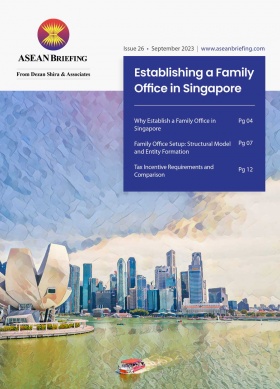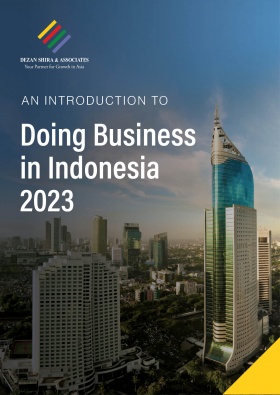Singapore’s 2024 Economic Outlook
As Singapore charts its economic course into 2024, optimism prevails amidst projected growth, particularly in key sectors such as electronics, F&B, and travel-related industries. The nation’s resilience, coupled with strategic recovery measures, positions it as a stable and promising investment destination for businesses and investors in the coming year and beyond.
As the world recovers from an unprecedented pandemic, geopolitical upheavals, and sluggish growth in China, Singapore’s economy is projected to experience growth in the upcoming year, after showing resilience in its 2023 recovery journey.
Projections by the Monetary Authority of Singapore (MAS) indicate an acceleration in local economic growth for 2024 alongside a notable easing of the inflation rate. With the anticipated recovery in Singapore’s export demand and the stabilization of interest rates by the Federal Reserve, the coming year could signify a pivotal point in Singapore’s financial expansion.
As we delve into the economic prospects of Singapore for the year 2024, noteworthy highlights emerge:
- The anticipated GDP growth, as per recent revisions, hovers around 2.3 percent.
- Projections indicate an expected headline inflation rate of 3.4 percent, complemented by an average core inflation of approximately 4 percent.
These factors collectively contribute to shaping the economic landscape and provide valuable insights for stakeholders and observers alike. Meanwhile, sectors with promising prospects include (among others):
- Food and beverage (F&B);
- Travel and tourism;
- Electronics;
- Manufacturing; and
- Trade.
Some challenges, however, may persist in banking and financial, and commodity supplies sectors.
Decoding Singapore’s 2024 economic outlook
In the 2024 outlook, Singapore’s economic growth hinges on external demand, introducing some uncertainty. While sectoral growth rates are anticipated to revert to pre-COVID norms, the trajectory reveals diverse patterns. Weaker growth is observed in external-facing industries, while domestic sectors experience robust expansion. Travel-related industries show significant double-digit growth following the global border reopening.
Despite a relief in the decline of global chip sales, certain sectors like memory and logic chipmakers continue to struggle. Demand for IT products in key markets, such as China and the US, remains subdued, contrasting with sustained structural demand in emergent sectors, including (but not limited to):
- Generative Artificial Intelligence;
- Electric vehicles (EVs);
- Internet of Things (IoT); and
- 5G networks.
Throughout much of 2023, Singapore’s economy faced subdued demands in global markets, particularly in manufacturing and trade-related areas. Meanwhile, travel and tourism-related sectors made strides toward recovery, capitalizing on increased travel and the gradual return of Chinese tourists.
In 2024, Singapore’s inflation rate is projected at 3.4 percent, a notable decrease from the previous 4 percent, as of August 2023 (CPI-All Items inflation). This revised forecast considers expectations of moderate private transport inflation and quota increases, with a stabilizing housing supply expected to bring about a rebalancing effect on property prices.
Industries to watch in 2024
Electronics and manufacturing
In the 2024 industry outlook, the electronics sector emerges as a key driver of growth for Singapore. Demonstrating enhanced performance since Q3 2023, the sector is set to capitalize on increased demand in global semiconductor sales and a favorable outlook for AI-related chips. By 2024, a turnaround is anticipated as the decline in sales is projected to shift, showcasing a growth rate of 11.8 percent.
This positive momentum not only positions the electronics sector for expansion but also augurs well for the overall financial growth and outlook of Singapore’s manufacturing and trade-related sectors.
In 2023, Singapore’s manufacturing sector faced notable challenges, primarily driven by the adverse impacts of the global semiconductor slump. Given the sector’s heavy reliance on specific industries, particularly semiconductors and electronic components, which constitute 43.7 percent of the total production, the decline in global semiconductor demand significantly impacted the city-state’s manufacturing output.
Looking ahead, the forecast for Singapore’s manufacturing output is promising, with anticipated growth extending from 2025 to 2028. Despite experiencing a momentary decline the sector is poised for a robust recovery, positioning itself as one of the standout performers in the Asia Pacific region. Notably, it is expected to surpass China’s manufacturing output growth during the period spanning 2025 to 2028.
Food and beverage, travel, and hospitality
Similarly, the F&B and travel-related industries, which have seen remarkable growth post-pandemic, are anticipated to continue ascending. However, the pace of growth might moderate as the phenomenon of revenge travel begins to taper off.
Singapore’s F&B industry is projected to close 2023 with a revenue of S$13.5 billion and annual growth rate of 1.95 percent (CAGR 2023-2027).
Indeed, despite facing a substantial decline in revenue in 2020 amidst the pandemic, the F&B industry in Singapore successfully rebounded in 2022 and is poised for further growth in 2023, particularly with the resurgence of tourism as visitors resume travel to the country.
Meanwhile, looking at travel-related industries, the trajectory for 2024 is anticipated to be characterized by a gradual incline rather than a sudden and sharp spike, especially when it comes to inbound tourists.
Booking.com’s yearly report revealed the latest travel preferences among travelers based in Singapore, encompassing trends such as sleep tourism, surprise getaways, and personalized experiences driven by artificial intelligence.
Banking, financial, and commodity supplies
On the flip side, sectors encompassing banking, financial, and commodity supplies could encounter persistent challenges. The uncertainties looming over the duration of the Central Bank’s commitment to maintaining high-interest rates create a landscape of ambiguity. The potential endurance of these high rates poses a challenge for businesses operating in the banking and financial domains, influencing borrowing costs, investment decisions, and overall economic activities.
Adding complexity to the scenario are the escalating geopolitical conflicts. These conflicts not only contribute to an atmosphere of global uncertainty but also bear the potential to disrupt raw material supplies. This disruption, in turn, can reverberate across various industries, impacting production, pricing, and supply chains. As a consequence, the cascading effects of geopolitical conflicts may pose hurdles to the smooth functioning of global growth and trade.
Employment trends
Expectations for Singapore’s job market indicate a softening trend ahead, with overall employment growth likely to receive backing from domestic services and recovering travel sectors. While demand for workers in external-facing industries is predicted to strengthen later in the year, a substantial increase in resident unemployment seems improbable. However, brace for a notable slowdown in wage growth due to declining nominal GDP and the normalization of bonuses after an unusual surge this year.
The idea that recent trends in wage growth and bonuses will persist faces challenges as Singapore’s growth slows, disinflation takes hold, and more foreign workers enter the scene. The anticipated moderation in wage growth aligns with the shifting economic landscape. Despite this, some experts foresee a resilient wage growth path, citing Singapore’s expected recovery, tightened manpower policies, and sector-specific rebounds, particularly in finance
Webinar – Hong Kong vs. Singapore: A Comparison of Current Business Environments, Key Industries, and Regional Hub Potentia
Thursday, April 25, 2024 | 12:00 PM New York / 6:00 PM Brussels
Kyle Freeman, Partner at Dezan Shira & Associates, will compare and contrast Singapore and Hong Kong’s business climates, ease of doing business, key industries, risks, and potential as a regional hub.
Singapore’s steady course amid global headwinds
As Singapore sets sail into 2024, the economic landscape is delicately poised between optimism and uncertainty. The MAS underscores that the strength and sustainability of anticipated growth hinge on external final demand, injecting an unpredictable element into the equation.
The nation’s economic journey is characterized by a three-speed trajectory: subdued growth in external-facing industries, above-trend expansion in domestic-facing sectors, and robust double-digit growth in travel-related industries post-global border reopening. While sectoral growth rates are projected to realign with pre-COVID trends, the trajectory remains contingent on the ever-evolving global economic dynamics.
In Q3 2023, Singapore’s electronics output stabilized, buoyed by a modest rebound in global semiconductor sales and optimism surrounding AI-related chips. However, geopolitical tensions linger, casting shadows on the potential for supply chain disruptions.
On a positive note, the financial services sector seems to have found its footing as interest rates level off, indicating a potential modest recovery. Examining the labor market, a softening is expected in the next few quarters, but overall employment growth is poised for support from domestic-oriented services and travel-related sectors.
Despite uncertainties, the majority of analysts maintain cautious optimism. Propelled by Singapore’s anticipated growth recovery in 2024, a tight labor market, the impact of tightened manpower policies, and the Progressive Wage Model’s expansion, they anticipate that nominal wage growth may not experience a significant decline from current rates. Additionally, the potential recovery of the financial sector is seen as a contributing factor to overall wage increases, particularly in sectors with comparatively higher compensation.
Entering 2024, Singapore stands resilient, navigating global economic tides with strategic foresight. The anticipated recovery in key sectors, coupled with prudent policy measures, positions the nation as an attractive investment destination. Businesses and investors can be assured of the government’s commitment to sustaining economic growth.
About Us
ASEAN Briefing is produced by Dezan Shira & Associates. The firm assists foreign investors throughout Asia and maintains offices throughout ASEAN, including in Singapore, Hanoi, Ho Chi Minh City, and Da Nang in Vietnam, Munich, and Esen in Germany, Boston, and Salt Lake City in the United States, Milan, Conegliano, and Udine in Italy, in addition to Jakarta, and Batam in Indonesia. We also have partner firms in Malaysia, Bangladesh, the Philippines, and Thailand as well as our practices in China and India. Please contact us at asia@dezshira.com or visit our website at www.dezshira.com.
- Previous Article Singapore Increases Goods and Services Tax for 2024
- Next Article Opportunities for Investors in Indonesia’s Cosmetics Industry








